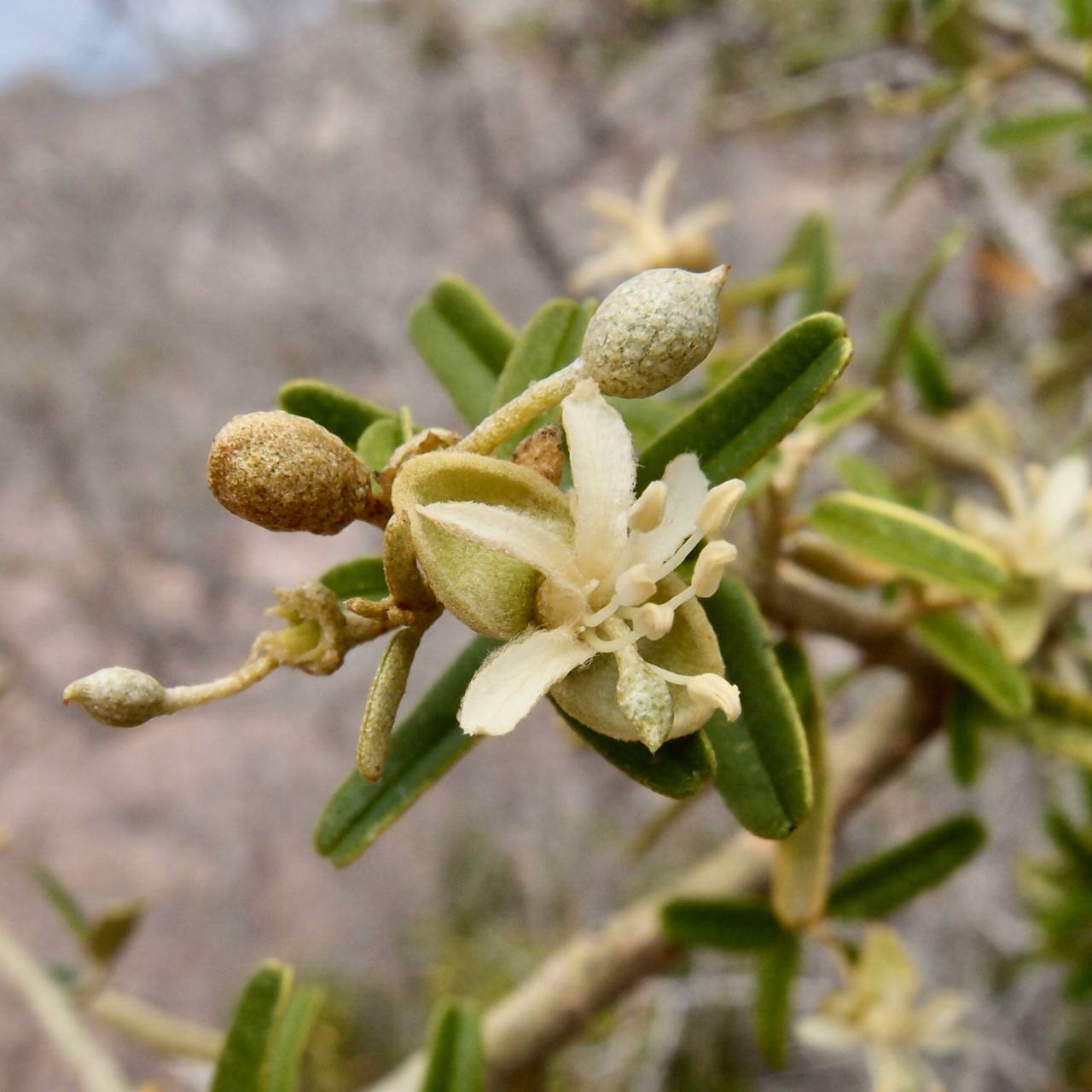Capparaceae
|
Capparaceae |
|
|
Shrubs or trees (deciduous or evergreen); spines absent (usually without thorns except Atamisquea); glabrous or puberulent with stellate trichomes or lepidote scales (producing glucosinolates). Stems erect or spreading; sparsely to profusely branched. Leaves alternate and distichous or spirally arranged, simple [palmately compound]; venation pinnate; stipules caducous, scalelike or absent; petioles present (pulvinus absent, nectaries present or absent, [petiolar spines present]); blade margins entire. Inflorescences terminal or axillary, usually racemose, sometimes corymbose or flowers solitary; pedunculate; bud scales usually persistent; bracts absent. Pedicels present. Flowers bisexual (sometimes appearing unisexual), actinomorphic or slightly zygomorphic, rotate to crateriform, campanulate, or urceolate; perianth and androecium hypogynous; sepals usually persistent (deciduous in Quadrella incana), 4, distinct; petals 4, attached directly to receptacle, imbricate, distinct, equal; intrastaminal nectary-discs or glands present or absent; stamens 6-250; filaments distinct, glabrous or pubescent; anthers dehiscing by longitudinal slits, pollen shed in single grains, binucleate, commonly tricolporate; pistil 1; ovary 1-carpellate, 2-locular; placentation parietal; ovules anatropous, bitegmic; style 1, (straight, relatively short and thick); stigma 1, capitate, unlobed. Fruits capsules or berries, valvate, elongate, dehiscent or not by 2 lateral valves (stipitate from elongation of gynophore). Seeds 1-38 or many, usually tan to yellowish brown or brown, sometimes green; arillate or not; endosperm scanty or absent, sometimes a persistent perisperm present; cotyledons incumbent to accumbent, (radicle-hypocotyl relatively short and conical). x = 8, 10. |
|
